The A. papilionacea group are polymorphic species with a wide distribution, unsurprisingly giving rise to a significant range of natural and
regional variations. First described by Linnaeus as long ago as 1759, the taxon has been intensely studied ever since,
leading to the recognition of many forms and the creation of a list of synonyms far too
extensive to detail in these pages. A genetic study in 1993 comparing subspecies grandiflora, papilionacea and aegaea determined that the minimal genetic difference's discovered, were
consistent with nothing more than separate geographic populations within a single
cohesive gene
pool and that they could only be regarded as simple morphs.
These findings were not universally accepted and new taxa continue to emerge.
A. papilionacea subsp. messenica
was first described by Renz in 1928 and refers to plants from the
southern and eastern Peloponnese where it grows on dry alkaline soils
in full sun. It is one of the more distinctive plants within the O. papilionacea
group and easily recognized by its pale colouration. The lip and
perianth are either white or the palest pink, veined with violet
lining, sometimes so weakly as to be virtually indistinguishable. The
flower head can be dense but is often merely a flat topped, few
flowered inflorescence atop a straggly stem. It has been dubiously
recorded from Attica but it seems probable that the discovery refers to
pale phase A. aegaea.
It flowers from the beginning of April and in a good year, still be presentable through May. The pictures here date from the middle of April and come from the area of Lakonia between Sparti and Githeo. The last picture depicts a hybrid between A. papilionacea subsp messenica and A. boryi.
It flowers from the beginning of April and in a good year, still be presentable through May. The pictures here date from the middle of April and come from the area of Lakonia between Sparti and Githeo. The last picture depicts a hybrid between A. papilionacea subsp messenica and A. boryi.
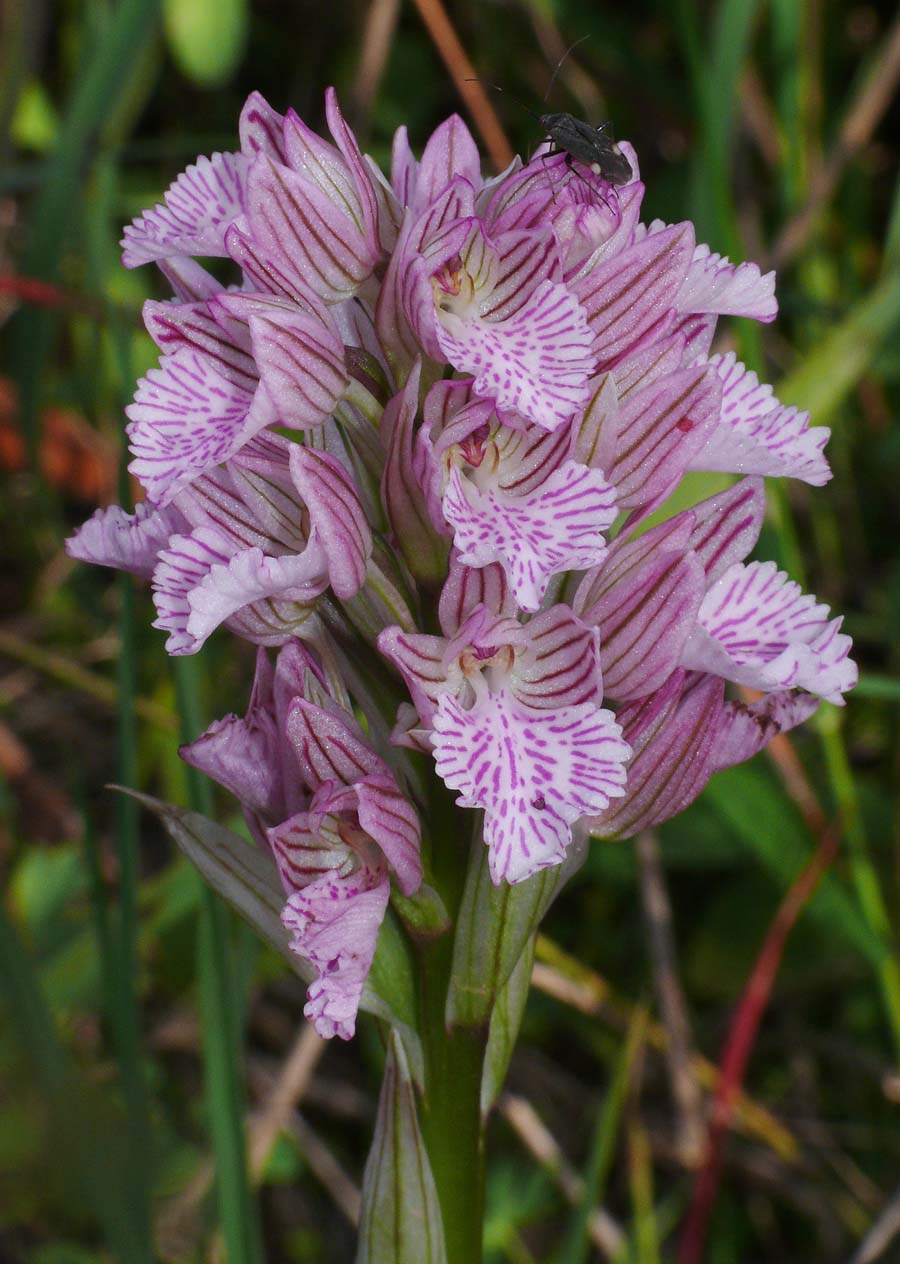
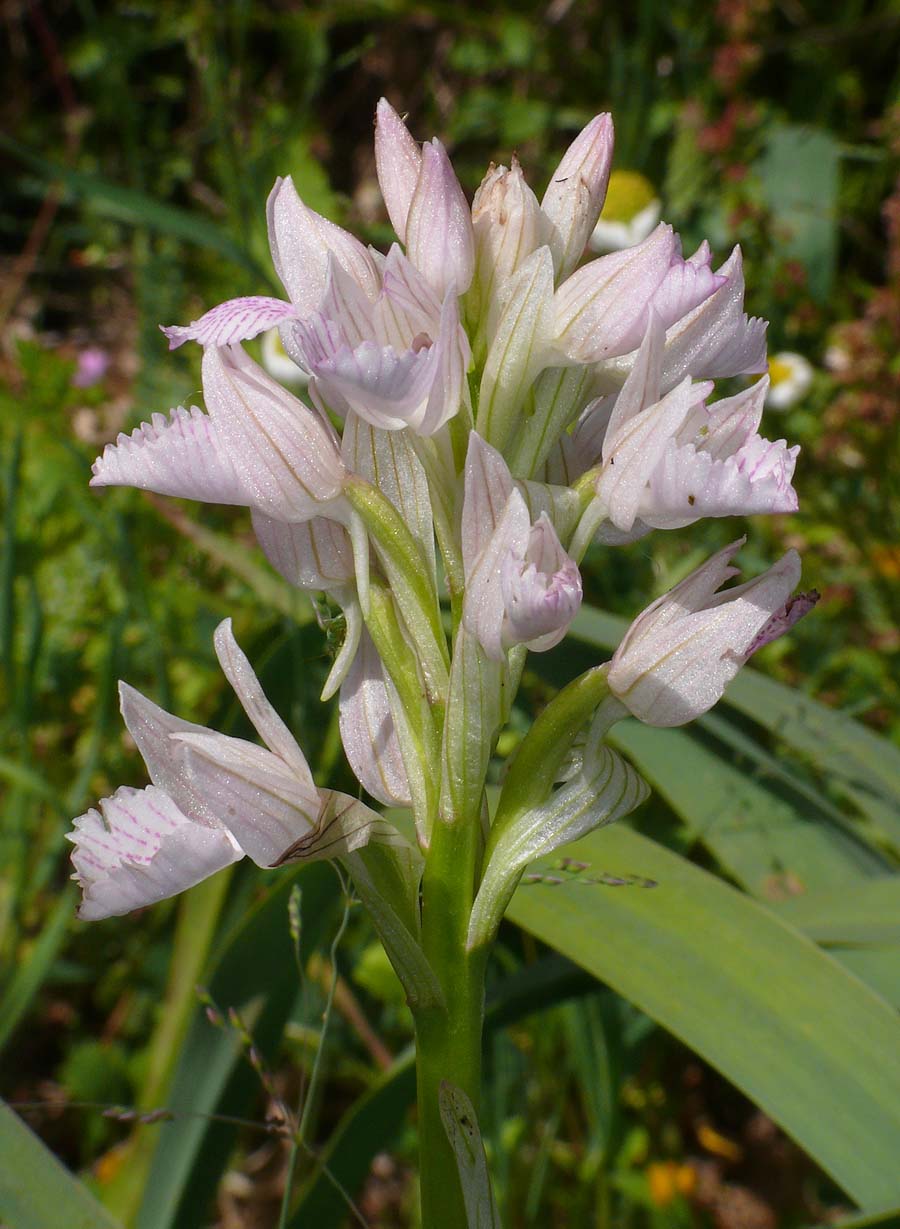
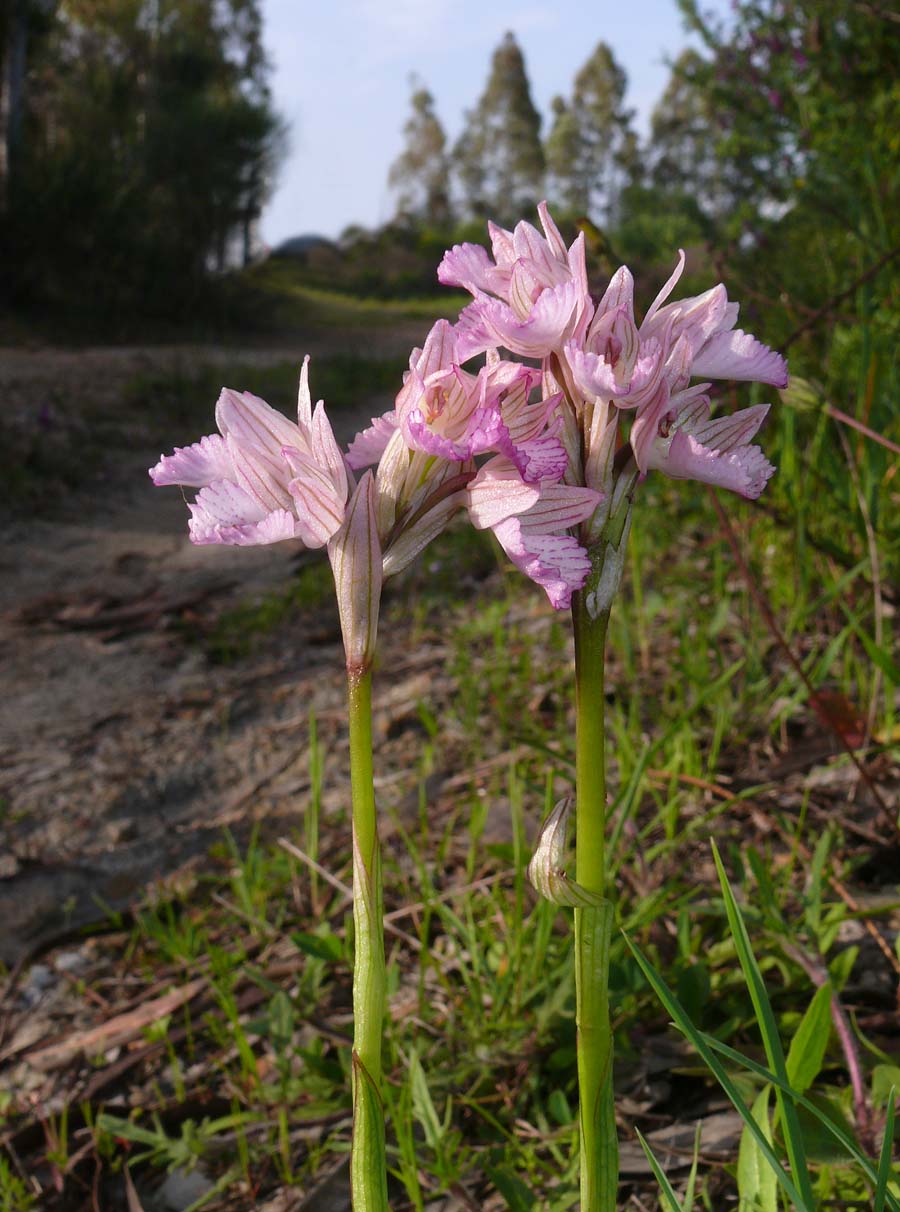
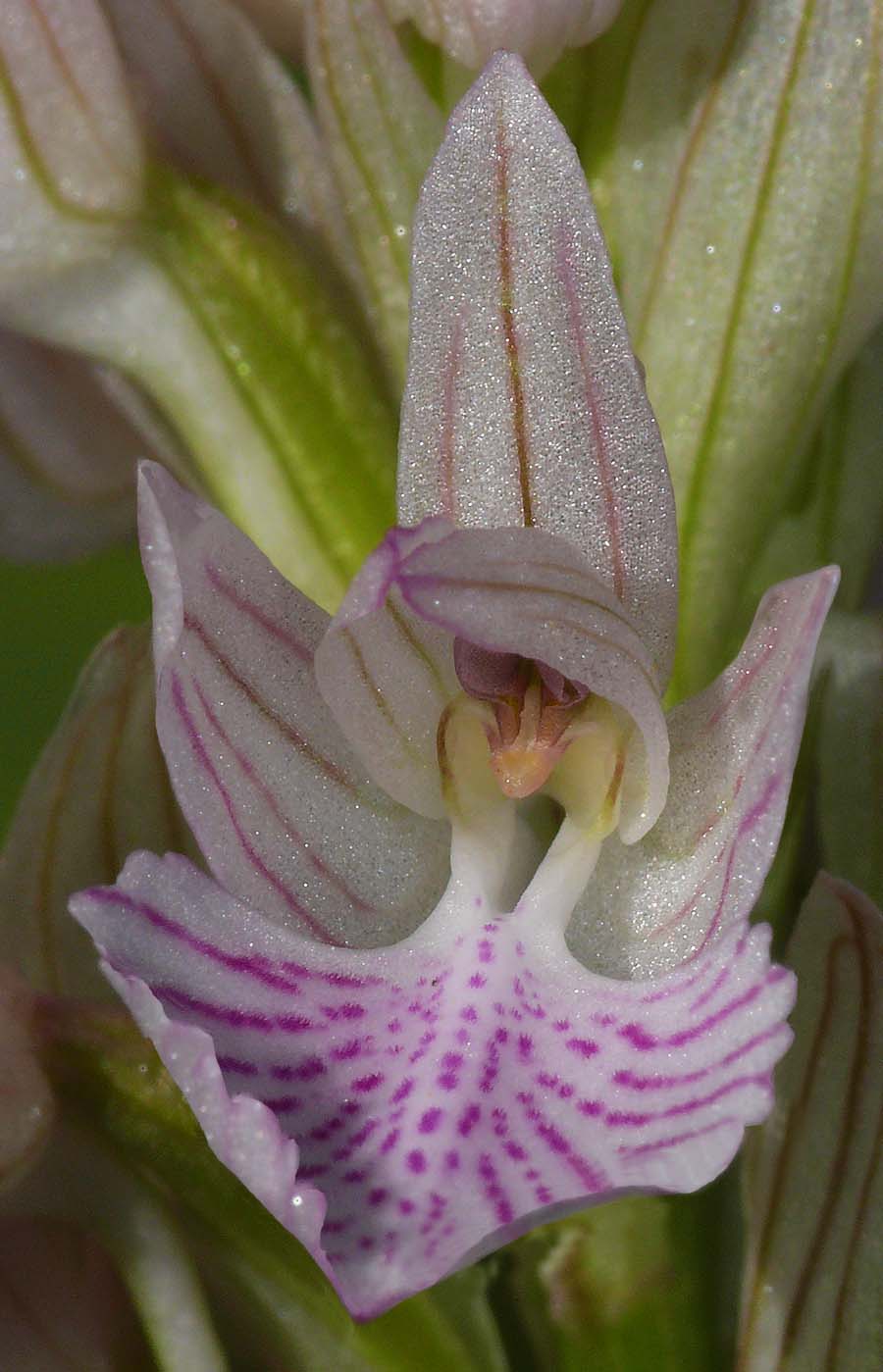
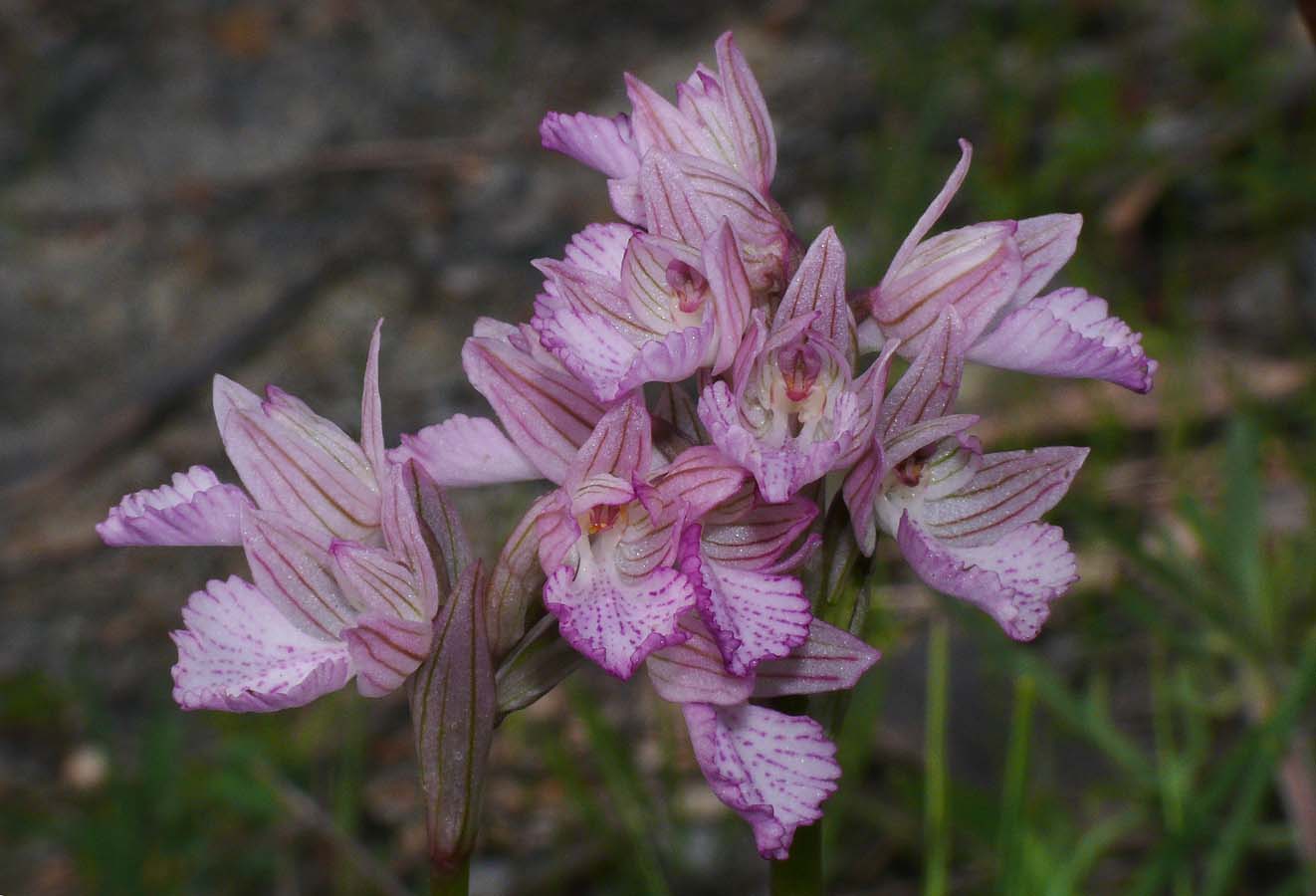
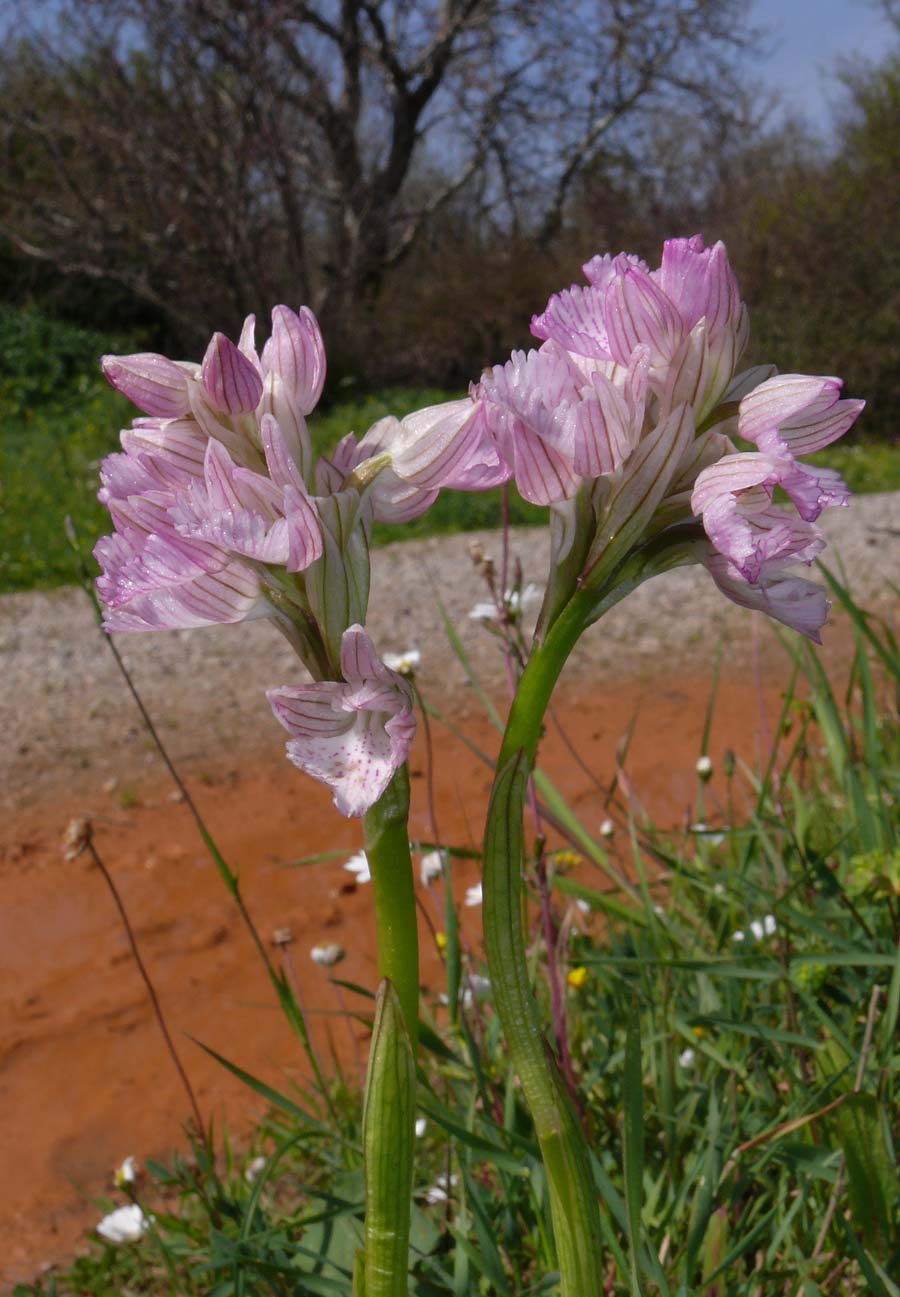
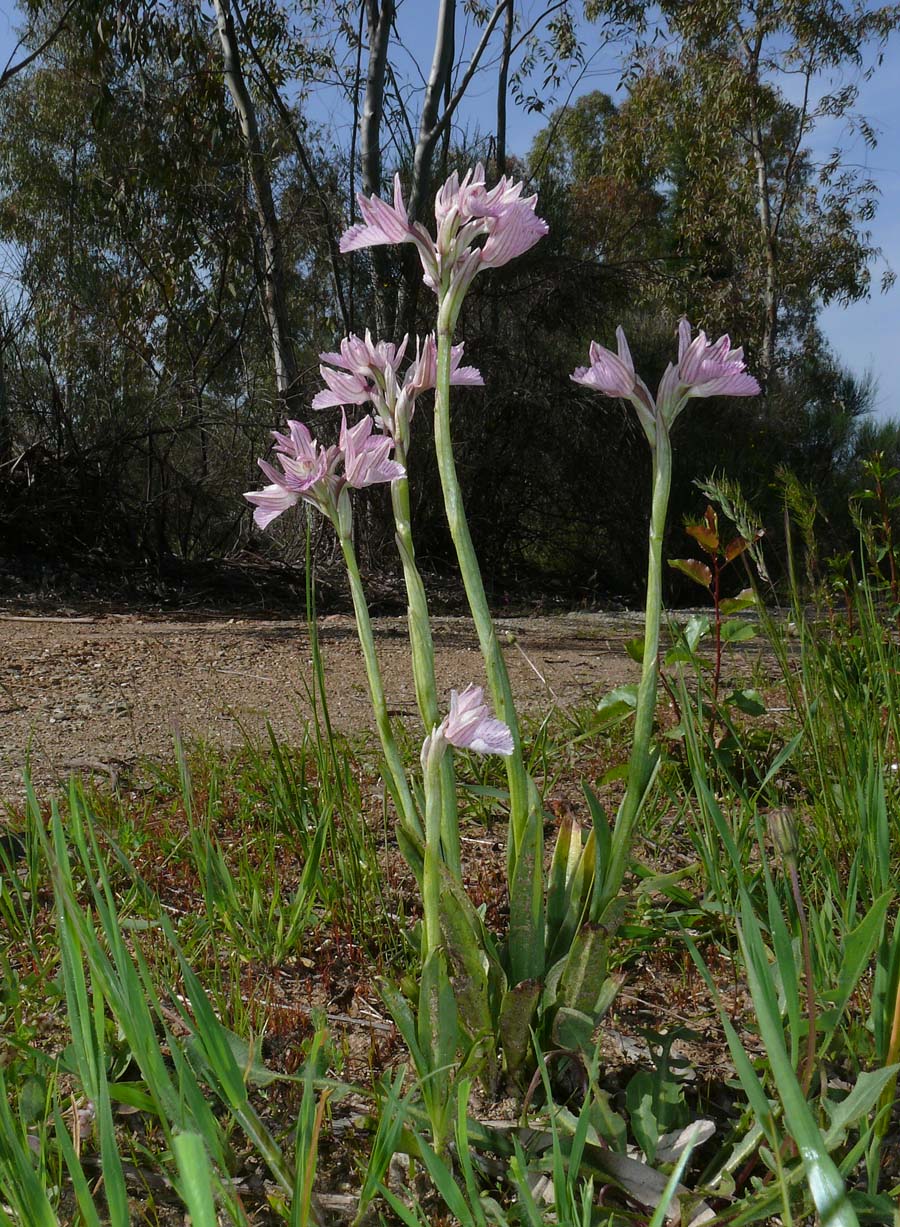
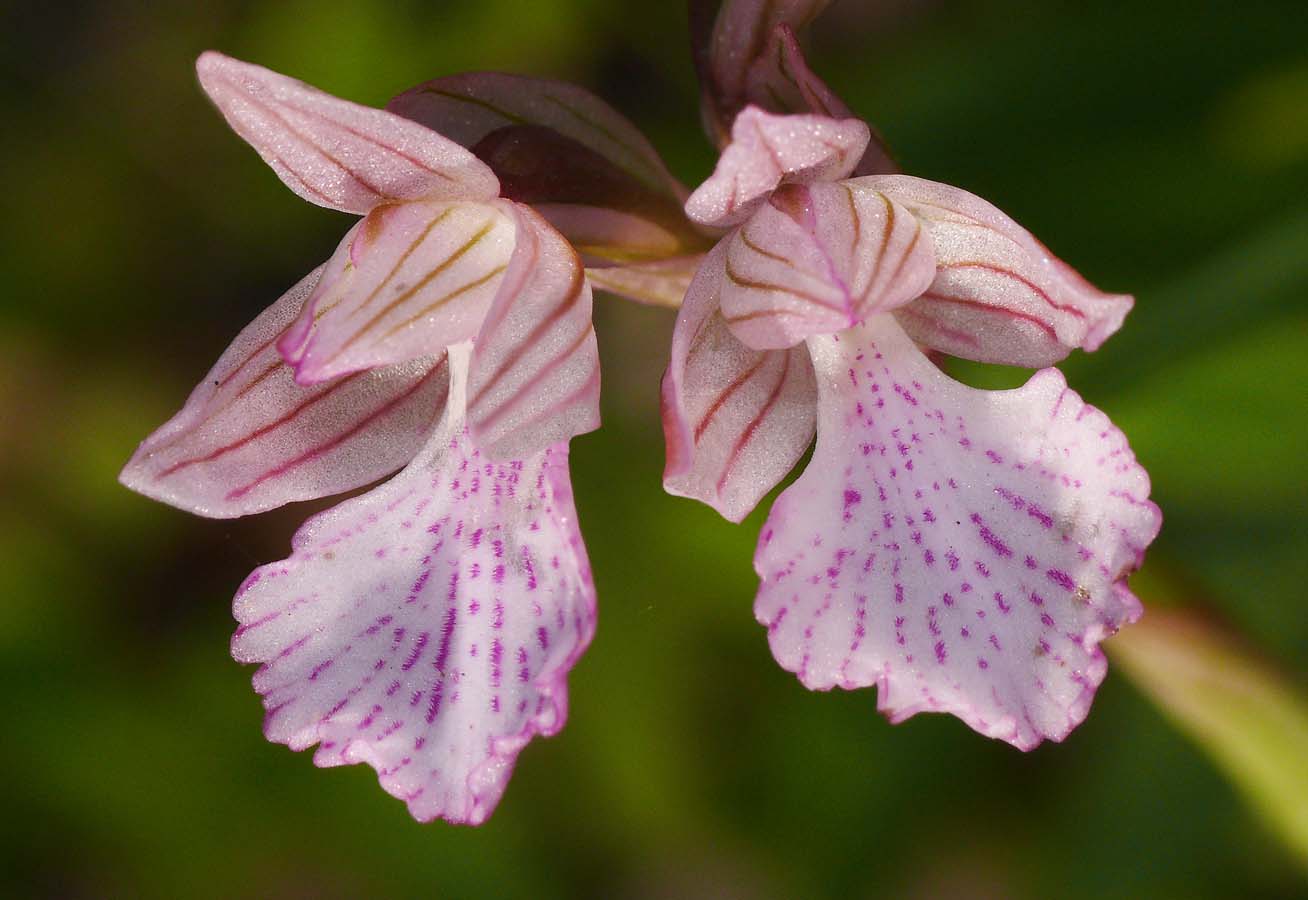
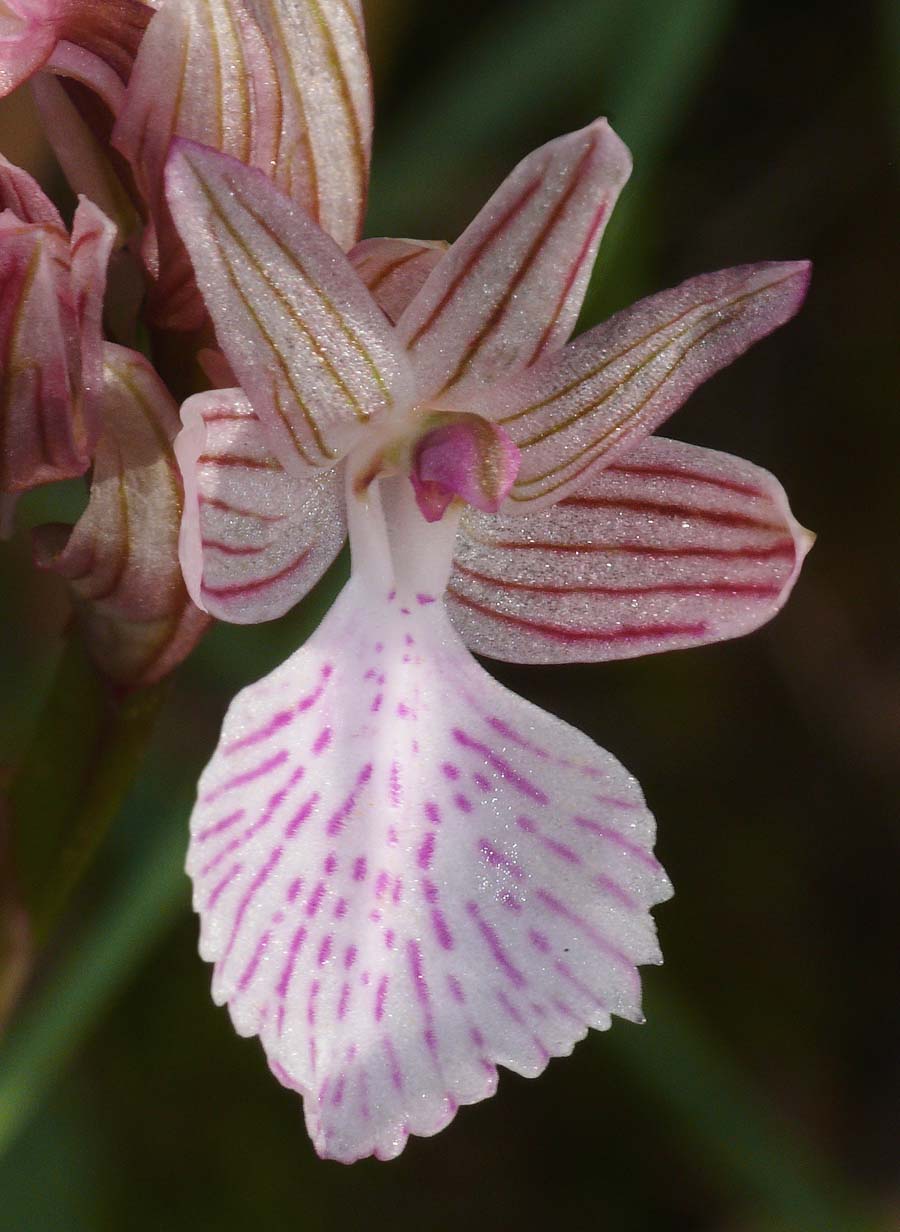
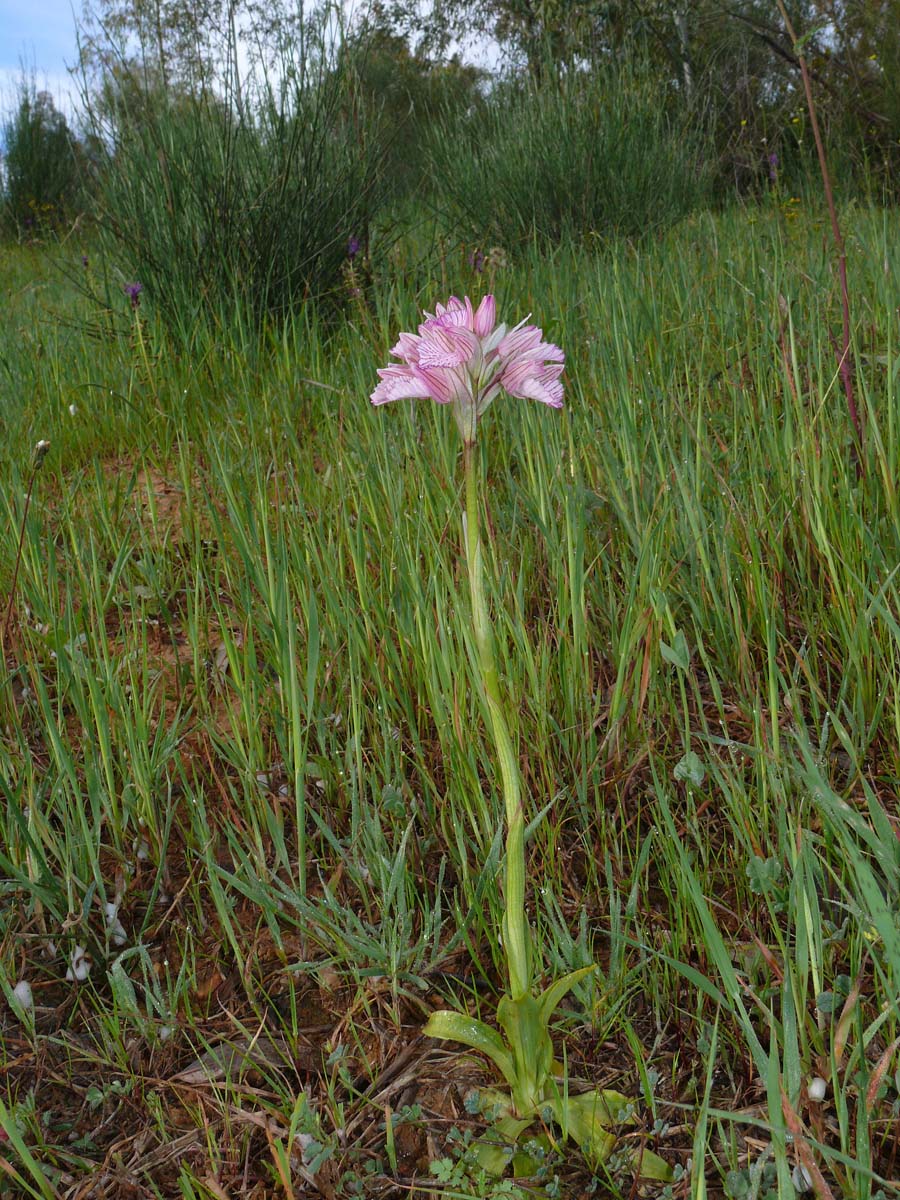
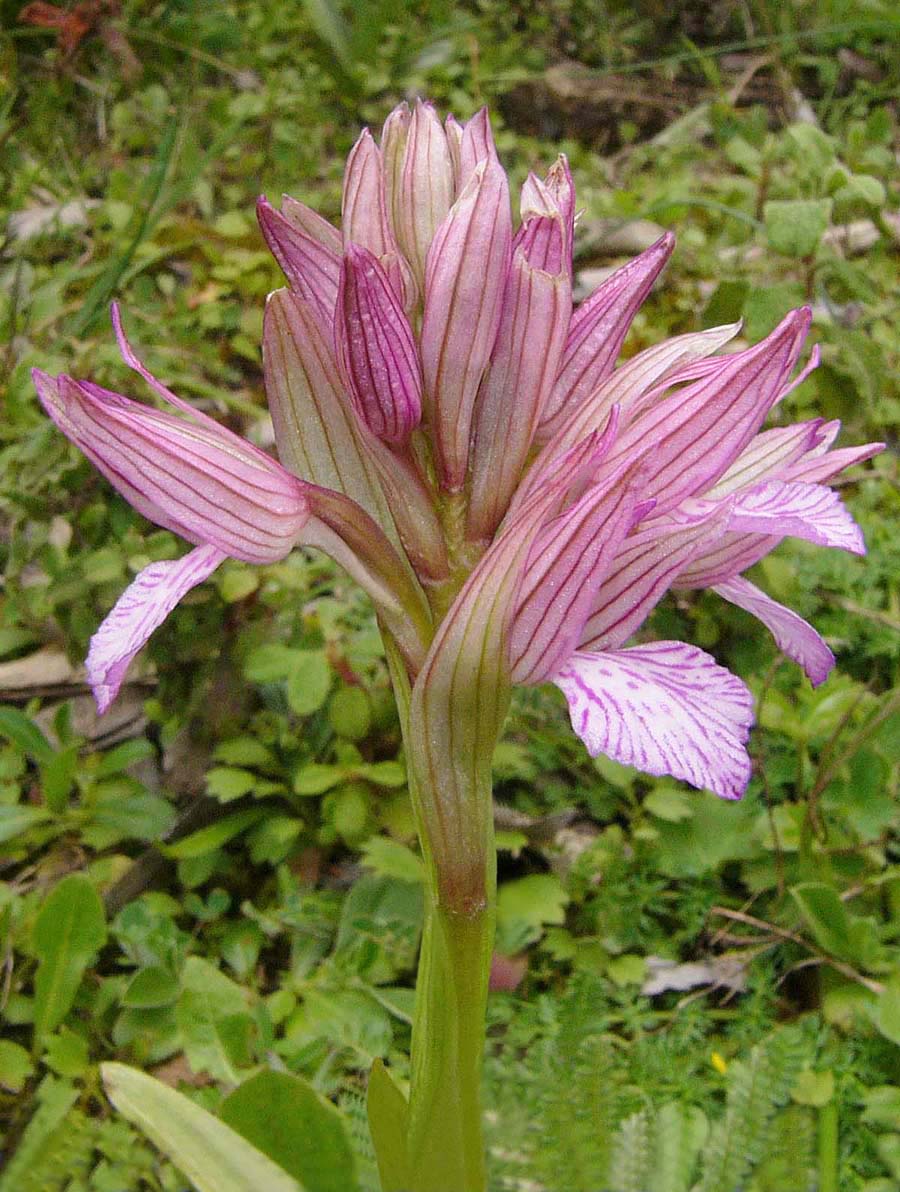
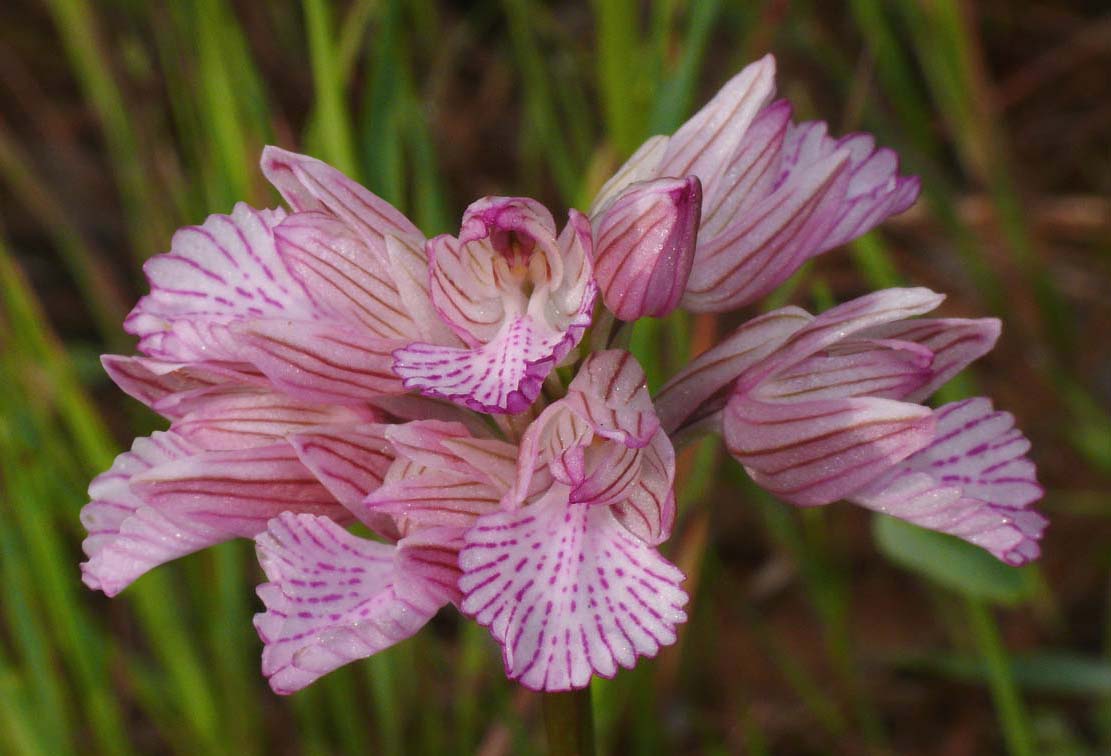

.